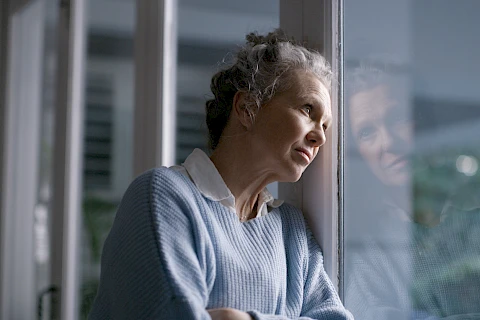
Seasonal Affective Disorder (SAD) is a type of depression that comes and goes with the seasons. It typically starts in the late fall and early winter and goes away during the spring and summer. However, for some individuals, the symptoms persist, impacting their mental health, well-being, and quality of life. Senior Helpers Napa will provide a comprehensive guide to help you understand SAD, figure out your next course of action, and inform you of the steps to take to manage your SAD symptoms effectively.
What Is SAD?
Seasonal Affective Disorder (SAD) is more than just winter blues. Its symptoms can be severe enough to interfere with daily activities, causing feelings of depression most of the day, nearly every day.
Other symptoms can include low energy, sleeping problems, changes in appetite or weight, difficulty concentrating, and feeling hopeless or guilty. If these symptoms persist beyond the typical winter months, it's time to start considering other factors that may be at play.
What to Do When SAD Symptoms Persist
Persistent SAD symptoms might be indicative of something more, perhaps a misdiagnosis or other underlying health conditions. Hence, the first step you must take is to consult with a healthcare professional. Medical practitioners can provide an accurate diagnosis, considering all necessary factors like your medical history, symptoms, and the time of year they occur. This step is of paramount importance as it will make clear the path towards recovery.
Therapy and counseling are important elements in managing symptoms of SAD. Cognitive Behavioral Therapy (CBT), a type of talk therapy, has been found significantly effective in dealing with symptoms. A therapist or counselor can guide you through the process, helping you understand your feelings and teaching you how to manage them. They assist you in replacing negative thoughts with positive ones, potentially helping you cope better with winter depression.
Lifestyle changes have a profound impact on your overall mental health. Maintaining a balanced, nutritious diet and regular exercise regimen can help elevate mood and energy levels. Always talk to your doctor before starting a new fitness routine. Sleep plays an integral role too, as poor sleep can exacerbate symptoms. Establishing a regular sleep schedule can help regulate mood and prevent fatigue.
Another treatment option to consider is light therapy. This treatment involves sitting a few feet from a specially designed light box that exposes you to bright light, mimicking natural outdoor light. Light therapy stimulates your brain's chemicals linked to mood, easing SAD symptoms.
When to Seek Help
Addressing mental health symptoms can be a challenging task to undertake on your own. Senior Helpers Napa provides comprehensive in-home care services, including assistance with managing SAD symptoms. We can connect you with professionals offering therapy and counseling services specifically tailored for seniors.
Our team is well-experienced and trained to offer the emotional support you need during this time. We also guide integrating lifestyle changes and offer companionship to make your journey toward recovery less lonely.
Contact Senior Helpers Napa for Help Managing SAD
Persistent Seasonal Affective Disorder symptoms should not be ignored or brushed off as mere "winter blues." If you are experiencing such symptoms, consult a professional, consider therapy, make necessary lifestyle changes, and explore options such as light therapy.
Senior Helpers Napa is here to assist you every step of the way. If you or a senior loved one is in Sonoma, American Canyon, St. Helena, or Fairfield, contact us to learn more about our compassionate senior care services and support.